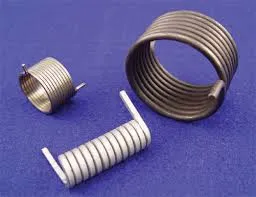
- Mobile Phone
- +8613931874955
- sales@cntcmetal.com
brick expansion ties
Understanding Brick Expansion Ties Essential Components for Modern Construction
In the world of construction, brick remains one of the most popular building materials due to its durability, aesthetic appeal, and thermal efficiency. However, as modern architectural designs evolve, so too do the methods and materials used to ensure structural integrity and resilience. One crucial component that plays a vital role in maintaining the stability of brick structures is the expansion tie.
What are Brick Expansion Ties?
Brick expansion ties are mechanical devices used in masonry construction to connect brickwork to the underlying structural framework, usually made of concrete or steel. Their primary purpose is to accommodate movement caused by temperature fluctuations, moisture absorption, and settling of the building’s foundation. Unlike traditional ties, which may rigidly hold brick in place, expansion ties allow for limited movement while still providing the structural support necessary for the safety and longevity of the building.
Importance of Expansion Ties
The necessity for expansion ties in brick construction cannot be overstated. Brick, as a material, expands and contracts in response to temperature changes and moisture levels. If these movements are not accounted for, the resultant stress can lead to cracks, deformation, or even catastrophic failure of the masonry wall. Expansion ties help to bridge the gap between the flexibility required by the brickwork and the static nature of the building framework.
Furthermore, these ties are essential when constructing high-rise buildings or large brick facades. As buildings grow in height, they experience increased lateral forces due to wind and seismic activity. Expansion ties provide not only vertical support but also lateral stability, ensuring that the brickwork remains secure and intact under various stressors.
Types of Brick Expansion Ties
There are several types of expansion ties, each designed for specific applications within brick construction
. The most common types includebrick expansion ties

1. Mechanical Expansion Ties These are installed with anchors that allow for movement. They provide a reliable connection between brick and the supporting structure.
2. Flexible Ties Often used in situations where slight movement is anticipated, flexible ties can accommodate the natural movement of brick without compromising the structural integrity.
3. Pre-stressed Ties These are designed to maintain tension within the brickwork, allowing for controlled movement while absorbing stresses that could lead to damage.
Choosing the right type of tie depends on factors such as the design of the building, the type of brick used, and the environmental conditions to which the building will be exposed.
Installation and Maintenance
Proper installation of expansion ties is critical to their effectiveness. Builders must follow manufacturer guidelines and local building codes to ensure that the ties are positioned correctly and securely fastened. Regular inspections and maintenance of expansion ties should also be conducted to identify any signs of wear or failure, as early detection can prevent serious structural issues.
Conclusion
Brick expansion ties are an indispensable component of modern brick construction. By facilitating necessary movement and providing stability, they enhance the safety and durability of brick structures. As architectural designs continue to innovate, understanding and properly implementing these ties will be crucial for builders aiming for excellence and longevity in their projects. Whether constructing a residential building or a towering skyscraper, the role of brick expansion ties is essential in ensuring that brickwork remains a reliable and attractive choice in the construction industry.
share:
-
Your Source for Concrete Wall Ties and Masonry AccessoriesNewsJul.10,2025
-
Unlocking the Power of Iron Wire for Every ProjectNewsJul.10,2025
-
Explore Advanced Chain Wire and Stainless Steel Mesh FencingNewsJul.10,2025
-
Discover the Benefits of Annealed Wire ProductsNewsJul.10,2025
-
Discover China Stainless Steel Wire Mesh SolutionsNewsJul.10,2025
-
Build with Confidence Using High-Performance Masonry AccessoriesNewsJul.10,2025
-
Why Sacrificial Formwork Is Redefining Underground ConstructionNewsJun.06,2025



















